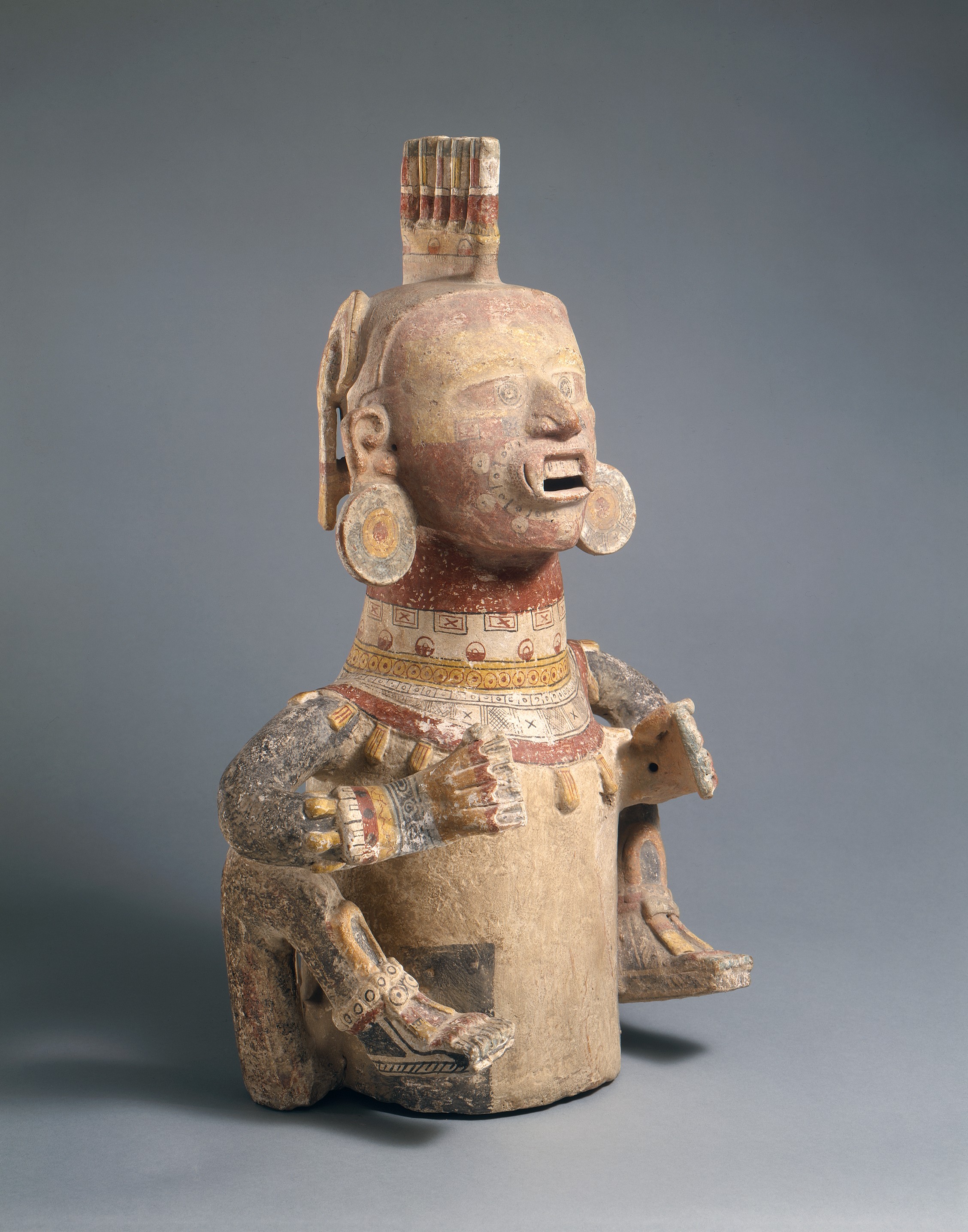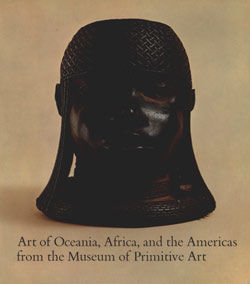Deity Censer (Xantil)
Not on view
This effigy censer depicts a seated deity with bent arms and hollow legs drawn up to either side of its cylindrical body. Supported by a long, thick neck, its oversized head features a pair of coarsely modeled ears bearing disc-shaped earspools. The deity’s open mouth exposes a row of teeth bounded by a pair of pointed, jaguar-like incisors at each corner. Atop its cap-like headdress, a crest of tubular representations of feathers extends vertically as a pair of modeled tassels dangles from rosettes along the back portion of the head.
Created in the Tehuacan Valley of the southeast corner of modern-day Puebla, this censer belongs to a class of objects popular among the Eastern Nahua peoples of the Late Postclassic period (ca. 1200–1500). Known as xantiles (sing. xantil), these ceramic braziers functioned as receptacles for a type of incense known as copal (tree resin) that, when burned, produced a thick, musky smoke. Rising through the central chamber of these anthropomorphic vessels, the smoke then billowed forth from holes pierced in the hands, chest, mouth, and nostrils. In this way, the burnt offerings allowed ritual practitioners to communicate with the gods.
The combination of headdress, pendant tassels, rich polychrome and geometric shapes identifies this xantil as the god Xochipilli ("Flower Prince"). A member of the group of deities known as the Macuiltonaleque, or "Five Souls," he was a patron of music, dance, feasting, and sexuality. For additional examples of Xochipilli and other Macuiltonaleque figures in The Metropolitan’s collection, see 00.5.8, 1979.206.368, and 2012.517.2.
William T. Gassaway, 2014–15 Sylvan C. Coleman and Pamela Coleman Fellow
-----
Resources and Additional Reading<
Boone, Elizabeth H. Cycles of Time and Meaning in the Mexican Books of Fate. Austin: University of Texas Press, 2007.
Houston, Stephen D., and Karl Taube. "An Archaeology of the Senses: Perception and Cultural Expression in Ancient Mesoamerica." Cambridge Archaeological Journal 10, no. 2 (2000): 261–94.
Houston, Stephen D., David Stuart, and Karl Taube. The Memory of Bones: Body, Being, and Experience among the Classic Maya. Austin: University of Texas Press, 2006.
Milbrath, Susan. "Astronomical Cycles in the Imagery of Codex Borgia 29-46." In Cultural Astronomy in New World Cosmologies, edited by Clive Ruggles and Gary Urton, 157–207. Boulder: University Press of Colorado, 2007.
Nicholson, Henry B. "The Mixteca-Puebla Concept Revisited." In The Art and Iconography of Late Post-Classic Central Mexico: A Conference at Dumbarton Oaks, October 22nd and 23rd, 1977, edited by Elizabeth H. Boone. Washington, D.C.: Dumbarton Oaks, Trustees of Harvard University, 1982.
Pohl, John M. D. Sorcerers of the Fifth Heaven: Nahua Art and Ritual of Ancient Southern Mexico. Princeton, NJ: Princeton University Program in Latin American Studies, 2007.
Due to rights restrictions, this image cannot be enlarged, viewed at full screen, or downloaded.
This artwork is meant to be viewed from right to left. Scroll left to view more.




